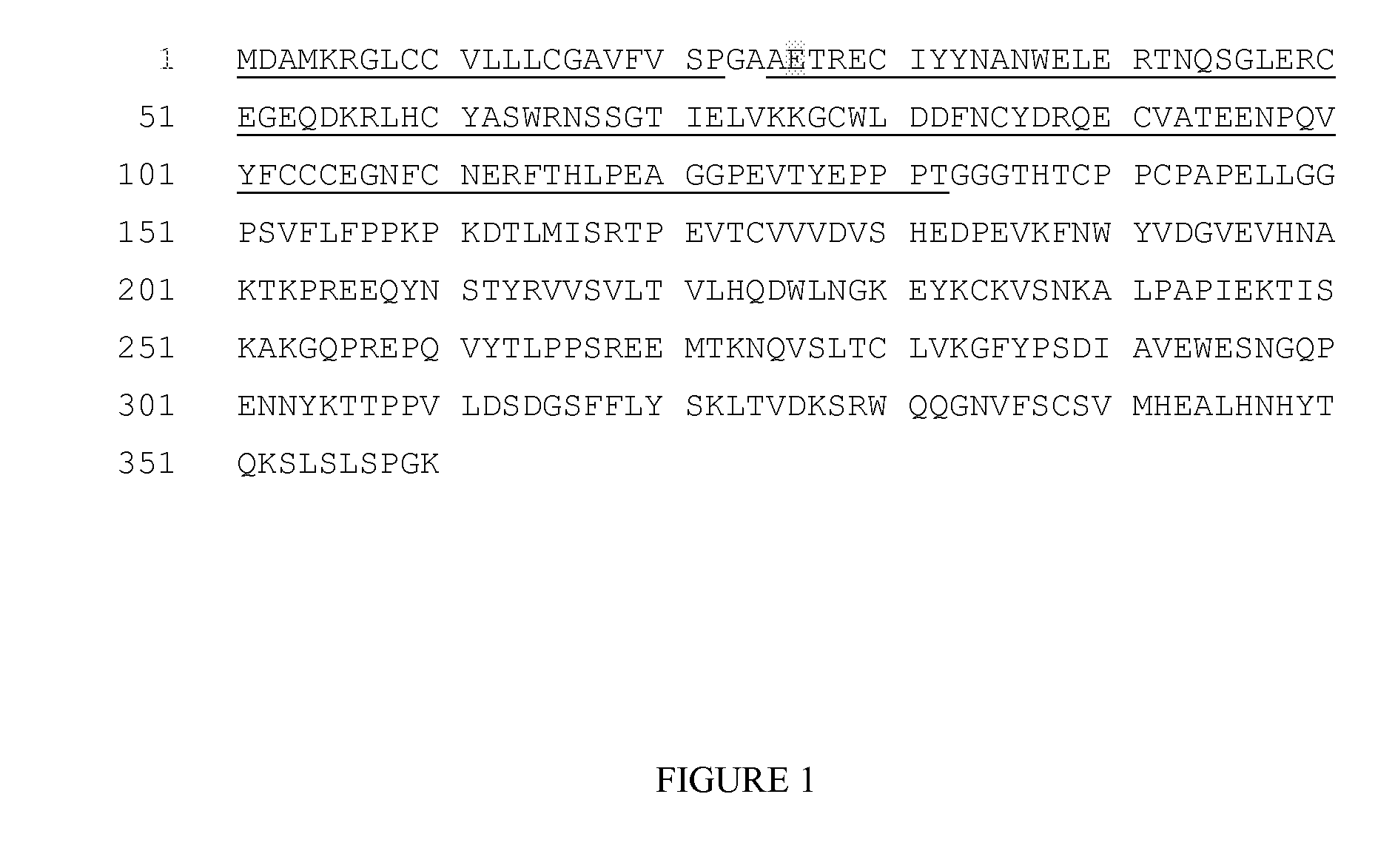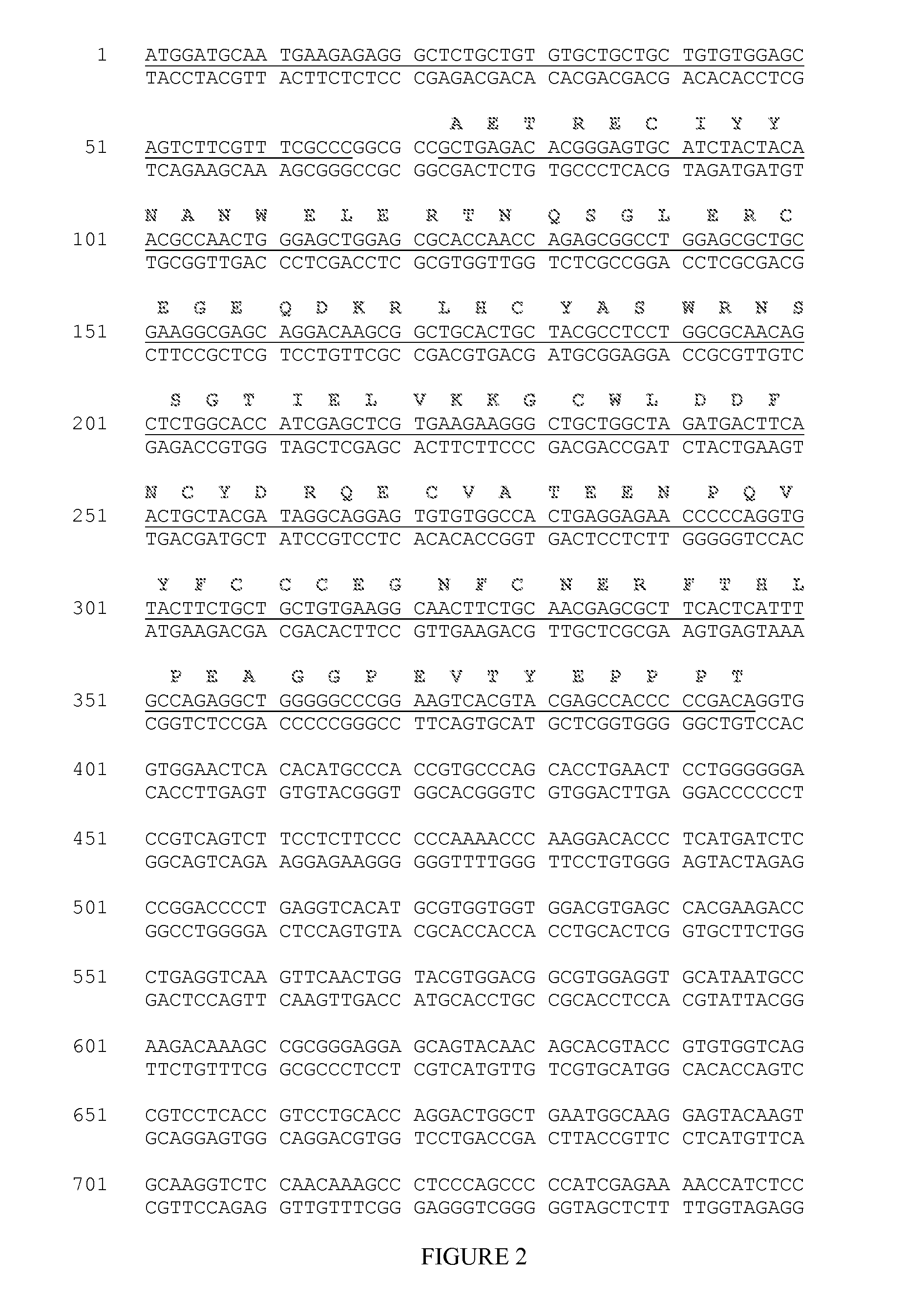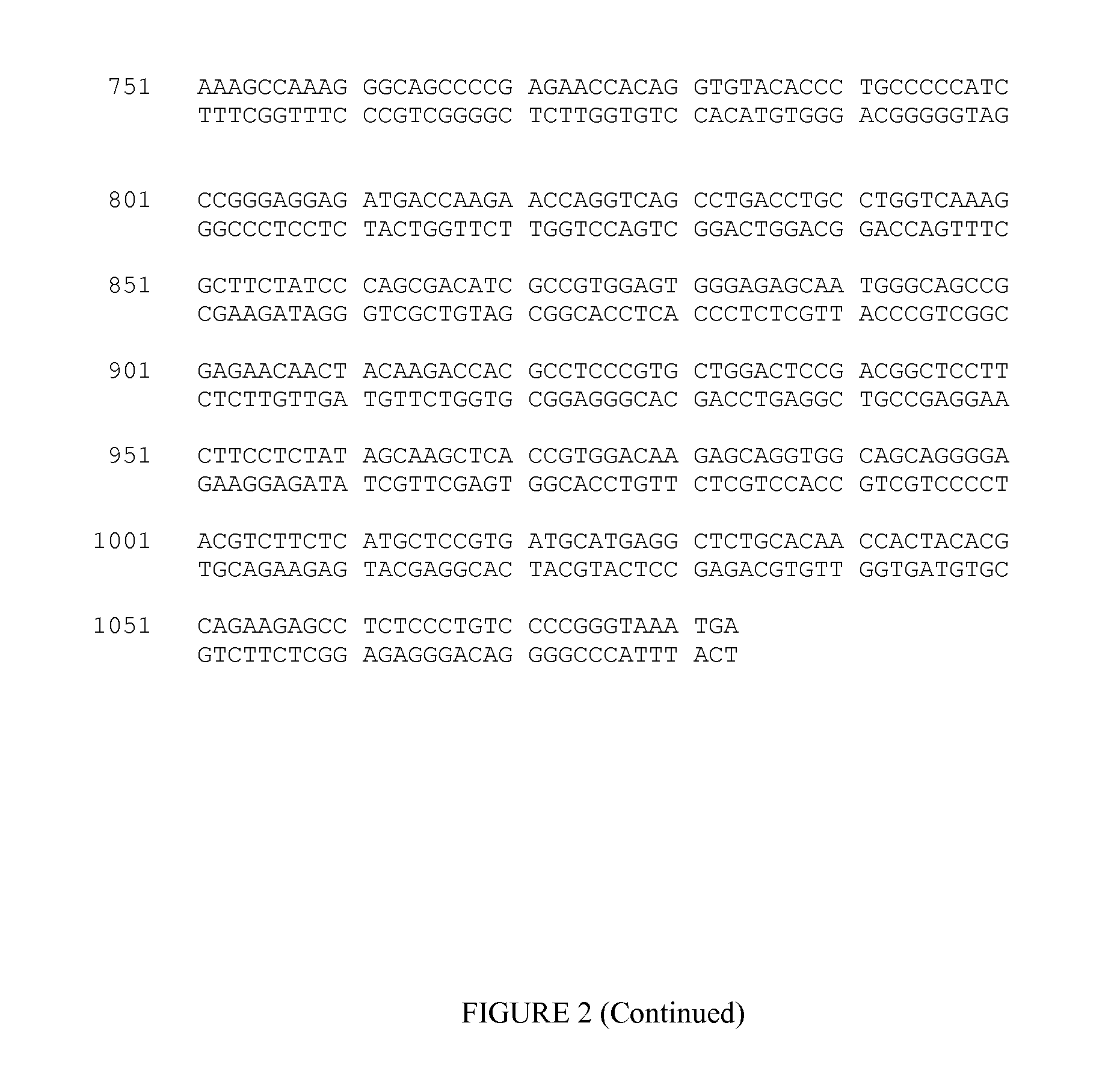Methods for treating fatty liver disease
a technology of fatty liver disease and treatment methods, which is applied in the field of methods for treating fatty liver disease, can solve problems such as fatty liver diseas
- Summary
- Abstract
- Description
- Claims
- Application Information
AI Technical Summary
Benefits of technology
Problems solved by technology
Method used
Image
Examples
example 1
Generation of an ActRIIB-Fc Fusion Protein
[0130]Applicants constructed a soluble ActRIIB fusion protein that has the extracellular domain of human ActRIIB fused to a human or mouse Fc domain with a minimal linker (three glycine amino acids) in between. The constructs are referred to as ActRIIB(20-134)-hFc and ActRIIB(20-134)-mFc, respectively.
[0131]ActRIIB(20-134)-hFc is shown below as purified from CHO cell lines (SEQ ID NO: 5)
GRGEAETRECIYYNANWELERTNQSGLERCEGEQDKRLHCYASWRNSSGTIELVKKGCWLDDFNCYDRQECVATEENPQVYFCCCEGNFCNERFTHLPEAGGPEVTYEPPPTAPTGGGTHTCPPCPAPELLGGPSVFLFPPKPKDTLMIS
[0132]The ActRIIB(20-134)-hFc and ActRIIB(20-134)-mFc proteins were expressed in CHO cell lines. Three different leader sequences were considered:
(i) Honey bee mellitin (HBML):MKFLVNVALVFMVVYISYIYA(SEQ ID NO: 7)(ii) Tissue Plasminogen Activator (TPA):MDAMKRGLCCVLLLCGAVFVSP(SEQ ID NO: 8)(iii) Native:MGAAAKLAFAVFLISCSSGA.(SEQ ID NO: 9)
[0133]The selected form employs the TPA leader and has the following unprocessed...
example 2
Generation of ActRIIB-Fc Mutants
[0138]Applicants generated a series of mutations in the extracellular domain of ActRIIB and produced these mutant proteins as soluble fusion proteins between extracellular ActRIIB and an Fc domain. The background ActRIIB-Fc fusion has the sequence (Fc portion underlined) (SEQ ID NO:12):
SGRGEAETRECIYYNANWELERTNQSGLERCEGEQDKRLHCYASWRNSSGTIELVKKGCWLDDFNCYDRQECVATEENPQVYFCCCEGNFCNERFTHLPEAGGPEVTYEPPPTAPTGGGTHTCPPCPAPELLGGPSVFLFPPKPKDTLMI
[0139]Various mutations, including N- and C-terminal truncations, were introduced into the background ActRIIB-Fc protein. Based on the data presented in Example 1, it is expected that these constructs, if expressed with a TPA leader, will lack the N-terminal serine. Mutations were generated in ActRIIB extracellular domain by PCR mutagenesis. After PCR, fragments were purified through a Qiagen column, digested with SfoI and AgeI and gel purified. These fragments were ligated into expression vector pAID4 (see WO2006 / 012627) ...
example 3
Effect of Truncated Variant ActRIIB(25-131)-hFc on Hepatic Steatosis in a Mouse Model of Diet-Induced Obesity
[0144]Nonalcoholic fatty liver disease (NAFLD) is a spectrum of increasingly common hepatic disorders widely considered to be the hepatic manifestation of metabolic syndrome and characterized by fat deposition in the liver (steatosis), often with deleterious effects. A subset of NAFLD patients develop an inflammatory condition referred to as nonalcoholic steatohepatitis (NASH), which can progress further to hepatic fibrosis, cirrhosis, and hepatocellular carcinoma (Perlemuter et al., 2007, Nat Clin Pract Endocrinol Metab 3:458-469). Applicants generated a truncated fusion protein ActRIIB(25-131)-hFc (FIGS. 1-2), using the same leader and methodology as described above with respect to ActRIIB(20-134)-hFc. The mature protein purified after expression in CHO cells has the sequence shown below (SEQ ID NO: 6):
ETRECIYYNA NWELERTNQS GLERCEGEQD KRLHCYASWREGNFCNERFT HLPEAGGPEV TYEPPPT...
PUM
| Property | Measurement | Unit |
|---|---|---|
| temperature | aaaaa | aaaaa |
| temperature | aaaaa | aaaaa |
| temperature | aaaaa | aaaaa |
Abstract
Description
Claims
Application Information
 Login to View More
Login to View More - R&D
- Intellectual Property
- Life Sciences
- Materials
- Tech Scout
- Unparalleled Data Quality
- Higher Quality Content
- 60% Fewer Hallucinations
Browse by: Latest US Patents, China's latest patents, Technical Efficacy Thesaurus, Application Domain, Technology Topic, Popular Technical Reports.
© 2025 PatSnap. All rights reserved.Legal|Privacy policy|Modern Slavery Act Transparency Statement|Sitemap|About US| Contact US: help@patsnap.com



